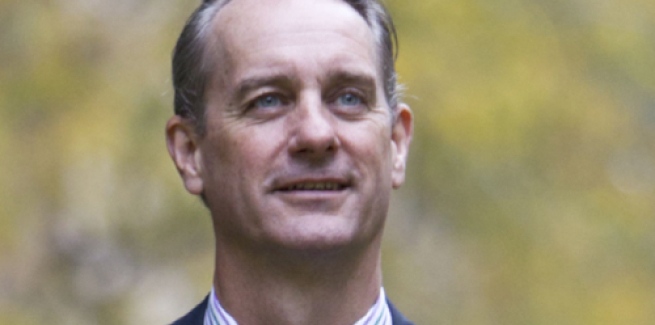MyState Bank has released its full-year results for the 2019 financial year (FY19), reporting mortgage settlement growth of 22.5 per cent, from $1.11 billion in FY18 to $1.36 billion.
As a result, MyState’s mortgage portfolio increased from $4.35 billion to $4.85 billion.
The non-major lender’s home lending performance helped drive above-system growth in its overall loan book, which jumped 10.7 per cent from $4.5 billion in FY18 to $5 billion.
However, MyState’s managing director and CEO, Melos Sulicich, is expecting weaker lending growth in in FY20, particularly in the owner-occupied segment.
“Looking ahead, we anticipate a much slower credit growth environment with increased competition in our target high-quality owner-occupied lending market,” he said.
“We do, however, have a clear growth strategy and, with increasing scale, expect continued above-system loan book growth [but it] would be more subdued than what we’ve seen in the past year.”
Speaking to Mortgage Business, Mr Sulicich also downplayed the stimulatory contribution of the Reserve Bank of Australia’s (RBA) back-to-back cuts to the cash rate and the Australian Prudential Regulation Authority’s (APRA) new lending guidance amid speculation of an uptick in demand.
“I don’t think they’re going to have a huge impact on growth,” he said.
According to the MyState CEO, an increase in the dollar value of principal and interest repayments as a result of maturing loans would dampen appetite for new credit.
“The dynamic of credit growth is gross lending minus pay-downs, and what we’re seeing now is increasing pay-downs,” he said.
“Three years ago, when the RBA [announced] two cash rate reductions, most people kept their payments at the same amount and, ever so slowly, the dollar value of their payments increased.
“If you take that over three years, it starts to increase and get bigger – a bit like a snowball.”
Mr Sulicich continued: “With two further cash rate reductions and reductions in interest charges, people are still keeping their repayments the same, so what you’re seeing is that snowball increasing, so the pay-downs are getting bigger — they’re moving growth from new lending as it were.”
The MyState CEO stated that the rollover of interest-only loans to principal and interest would also add to the overall debt burden and weigh further on annualised growth.
“On an annualised basis, credit growth is running at around about 3 per cent – it’s the lowest it’s been in recorded history.
“[I] reckon [in] 12 months’ time, we’ll be looking at 3 per cent credit growth and saying, ‘That’s pretty good’.
“There’s just an unusual dynamic in the market.”
Mr Sulicich added that he does not expect a sharp recovery in dwelling values, pointing to Australia’s high debt-to-income ratio.
“Whilst house price growth has stabilised, I don’t see it taking off like it did a few years ago because we’ve got a debt-to-income ratio of 200 per cent, and I don’t think it can get much higher than that,” he said.
Tasmania to remain MyState stronghold
Mr Sulicich was also asked if MyState would consider reducing its balance sheet exposure to the Tasmania market, which currently makes up 41.8 per cent of its lending portfolio.
The chief executive said that the bank remains committed to driving new business in Tasmania but said that a stronger rate of settlement growth in the broader market would help mitigate potential risks associated with a downturn in the Tasmanian market.
“Our plan is to continue to grow our balance sheet in Tasmania, which we’ve done over continual years,” he told Mortgage Business.
“Market share is pretty stable in Tasmania, and we’ve got a growing balance sheet, but our balance sheet is growing faster outside Tasmania than in Tasmania. That means the proportion of our lending in Tasmania as part of our total book is decreasing, and we would anticipate that dynamic continuing as well.
“From our point of view, the book is less skewed to the economic environment in Tasmania. It’s not a bad thing at the moment, but if the economic environment in Tasmania does turn, you’d want less of your book skewed to that.”
Mr Sulicich is not expecting a sudden reversal in Tasmania’s economy, which he said has been supported by a booming tourism industry.
“We’re seeing the economic environment in Tasmania reasonably strong at the moment, and I’ve got no reason to believe that won’t continue, particularly with a falling Australia dollar, [which] means that tourism is getting a bit of a boost,” he said.
“We’re getting more international tourists coming to Australia, staying longer and spending more, and also we’re getting more Australian tourists coming to Australia as offshore tourism gets more expensive.
“The tourism industry here is doing really well, and that’s flowing through to the hospitality industry, which is flowing through the rest of the economy as well.”
He concluded: “There is still this stubbornly high unemployment rate in Tasmania, which is around 6 per cent, which is above the national average, but the rest of the economy is going really well.”
Headline result
MyState’s FY19 results revealed that despite lending growth, the bank’s net profit after tax fell 1.5 per cent to $30 million.
The decline was mostly driven by a 2.9 per cent increase in its operating expenses to $78 million, reflecting increased expenditure associated with the rebranding of its subsidiary The Rock to MyState, and depreciates and amortisation expenses.
MyState’s operating income also declined, down 0.4 per cent to $120.4 million, partly reflecting a 17 bps reduction in its net interest margin to 1.8 per cent.
Over 30-day arrears underlying MyState’s loan book remained stable at 0.4 per cent.
[Related: Mortgage industry ‘as busy as ever’]
 ;
;
